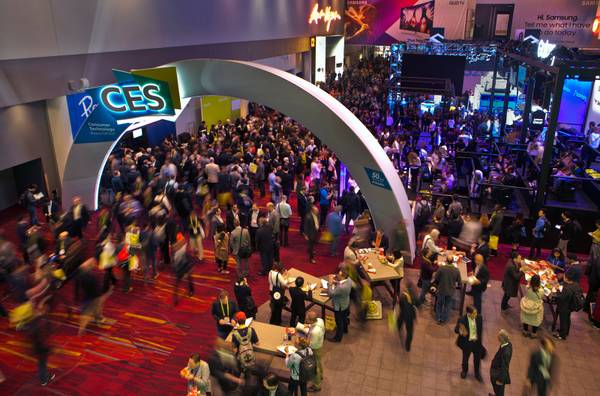If you need proof of how important the convention industry is to Southern Nevada, just follow the money. In 2016, convention travelers supported 85,000 jobs, $3.5 billion in wages and salaries paid, and $12.4 billion in total economic output here, according to the Las Vegas Convention and Visitors Authority. And in the past year and a half, many major casino companies on the Strip — and a few smaller ones — have spent or are planning to spend millions of dollars adding meeting or convention space to their portfolios.
• In August, Caesars Entertainment finished a $6.5 million renovation of meeting halls at the Flamingo. Company executives have said they plan to add a 300,000-square-foot convention facility on land Caesars owns on Koval Lane.
• Steve Wynn plans to close his Strip golf course this month and spend billions on a lagoon attraction with a hotel and meeting space. The land’s proximity to the Las Vegas Convention Center and the Sands Expo was a big factor in his reasoning.
• Last year, MGM Resorts International completed a $70 million expansion of the convention space at Mandalay Bay. This year, it broke ground on a $130 million expansion of the MGM Grand Convention Center. It has plans for conference space at Park MGM and MGM CEO Jim Murren recently said the company would continue to add more convention facilities.
“We’re looking for other growth opportunities as well, including in the building we are in right now at Bellagio,” Murren said during a recent conference call to discuss third-quarter earnings.
By investing in convention space, MGM and its competitors aren’t just taking advantage of a lucrative customer base. They’re helping to ensure Las Vegas stays a step ahead of rivals such as Orlando, Fla., Chicago and New York, as well as up-and-coming locations like San Diego, New Orleans and Nashville, Tenn.
“It’s extremely important for a city to remain investing in infrastructure,” said Alex Platia, a senior marketing manager with CVENT, which provides convention and meeting software to meeting planners and hoteliers. “It does help attract new organizations to the city.”
Platia says the first question convention planners ask when searching for a destination is: Does the city have enough modern convention space to handle their events?
“They’re always looking for the fresh thing, and they want to go to newly renovated places,” he said. “And ultimately, the city sees the benefits, because often those conventiongoers will stick around.”
The tendency of attendees to extend a midweek convention trip into the weekend is lucrative, Platia said. Even if conventiongoers don’t extend their stays, Las Vegas resorts still benefit from their business in a number of less obvious ways.
First, Strip resorts don’t have to discount room rates for convention attendees in the same way they do for some other customer segments. People going to conventions are less sensitive about room rates because their employers are picking up the tab.
In addition, large conventions raise occupancy rates, and that allows hotels to raise room rates for other customers. Finally, filling rooms on weekends is often not a problem for Strip resorts. But filling them midweek can be a challenge. Conventions address that need.
“Because meetings and events are so important to Las Vegas, the major players in the city are working together to profess the value of face-to-face meetings,” said Chandra Allison, senior vice president of sales for the Venetian, Palazzo and Sands Expo. “The community is better understanding the value of the meetings market, including the number of jobs created and their enormous economic impact.”
That’s why most Strip resorts are adding meeting space and have supported the expansion of the Las Vegas Convention Center, the funding of which was approved (along with the money for the proposed NFL stadium) in a special session of the Nevada Legislature last year.
The Legislature approved an increase in room taxes to help fund a $1.5 billion revamp of the convention center. The first phase was the demolition of the Riviera; the second phase is the construction of a 1.4 million-square-foot expansion. And the final stage will be renovating the existing buildings.
In 2016, the convention center hosted 22 percent of the city’s convention attendees.
But Las Vegas isn’t the only destination upping its convention game. Two top competitors are as well.
New York is planning to spend $1.5 billion to expand the Jacob K. Javits Convention Center in Manhattan. And last month, the Orlando Sentinel reported that officials at Orlando’s Orange County Convention Center are planning to ask county commissioners to approve a $500 million expansion of that facility.
Smaller markets also are trying to attract convention attendees and organizers. New Orleans is spending $65 million on a project to upgrade the area around its convention center. San Diego officials have been trying to get a ballot initiative underway to fund that city’s convention space.
“San Diego is a great example,” said Terry Jicinsky, the LVCVA’s senior vice president of operations. “They’re very focused on their strategy to expand the San Diego Convention Center. Politics to date have prevented them from doing it, but they’re very much in that second-tier category and looking to move into the first tier.
“New Orleans is working on a program that’s very similar to our program, expanding their convention center and bringing it closer to the French Quarter. So it makes that destination a package.”
“Nashville has also grown on the list for the past several years,” Platia said. “(It has) spent a ton of money making improvements on its hotels and its convention center.”

